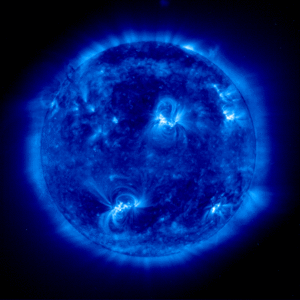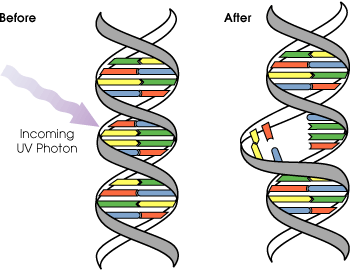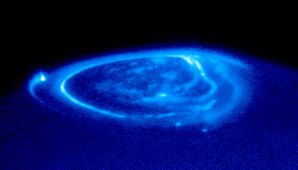UV Sterilizers
Ultraviolet (UV) radiation is electromagnetic radiation of a wavelength shorter than that of the visible region, but longer than that of soft X-rays. It can be subdivided into near UV (380–200 nm wavelength), far or vacuum UV (200–10 nm; abbrev. more...
FUV or VUV), and extreme UV (1–31 nm; abbrev. EUV or XUV).
When considering the effect of UV radiation on human health and the environment, the range of UV wavelengths is often subdivided into UVA (380–315 nm), also called Long Wave or "blacklight"; UVB (315–280 nm), also called Medium Wave; and UVC (< 280 nm), also called Short Wave or "germicidal". See 1 E-7 m for a list of objects of comparable sizes.
In photolithography, in laser technology, etc., the term deep ultraviolet or DUV refers to wavelengths below 300nm.
The name means "beyond violet" (from Latin ultra, "beyond"), violet being the color of the shortest wavelengths of visible light. Some of the UV wavelengths are colloquially called black light, as it is invisible to the human eye. Some animals, including birds, reptiles, and insects such as bees, can see into the near ultraviolet. Many fruits, flowers, and seeds stand out more strongly from the background in ultraviolet wavelengths as compared to human color vision. Many birds have patterns in their plumage that are invisible at usual wavelengths but seen in ultraviolet, and the urine of some animals is much easier to spot with ultraviolet.
The Sun emits ultraviolet radiation in the UVA, UVB, and UVC bands, but because of absorption in the atmosphere's ozone layer, 99% of the ultraviolet radiation that reaches the Earth's surface is UVA. (Some of the UVC light is responsible for the generation of the ozone.)
Ordinary glass is transparent to UVA but is opaque to shorter wavelengths. Silica or quartz glass, depending on quality, can be transparent even to vacuum UV wavelengths.
The onset of vacuum UV, 200 nm, is defined by the fact that ordinary air is opaque below this wavelength. This opacity is due to the strong absorption of light of these wavelengths by oxygen in the air. Pure nitrogen (less than about 10 ppm oxygen) is transparent to wavelengths in the range of about 150–200 nm. This has wide practical significance now that semiconductor manufacturing processes are using wavelengths shorter than 200 nm. By working in oxygen-free gas, the equipment does not have to be built to withstand the pressure differences required to work in a vacuum. Some other scientific instruments, such as circular dichroism spectrometers, are also commonly nitrogen purged and operate in this spectral region.
Extreme UV is characterized by a transition in the physics of interaction with matter: wavelengths longer than about 30 nm interact mainly with the chemical valence electrons of matter, while wavelengths shorter than that interact mainly with inner shell electrons and nuclei. The long end of the EUV/XUV spectrum is set by a prominent He+ spectral line at 30.4nm. XUV is strongly absorbed by most known materials, but it is possible to synthesize multilayer optics that reflect up to about 50% of XUV radiation at normal incidence. This technology has been used to make telescopes for solar imaging (pioneered by the NIXT and MSSTA sounding rockets in the 1990s; current examples are SOHO/EIT and TRACE) and microphotolithography (printing of traces and devices on microchips).
Read more at Wikipedia.org




